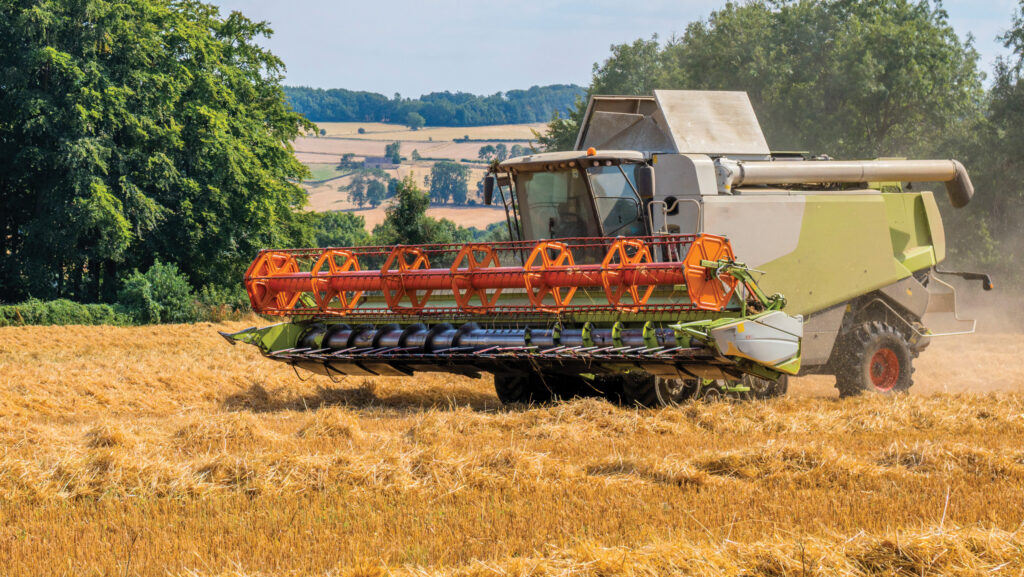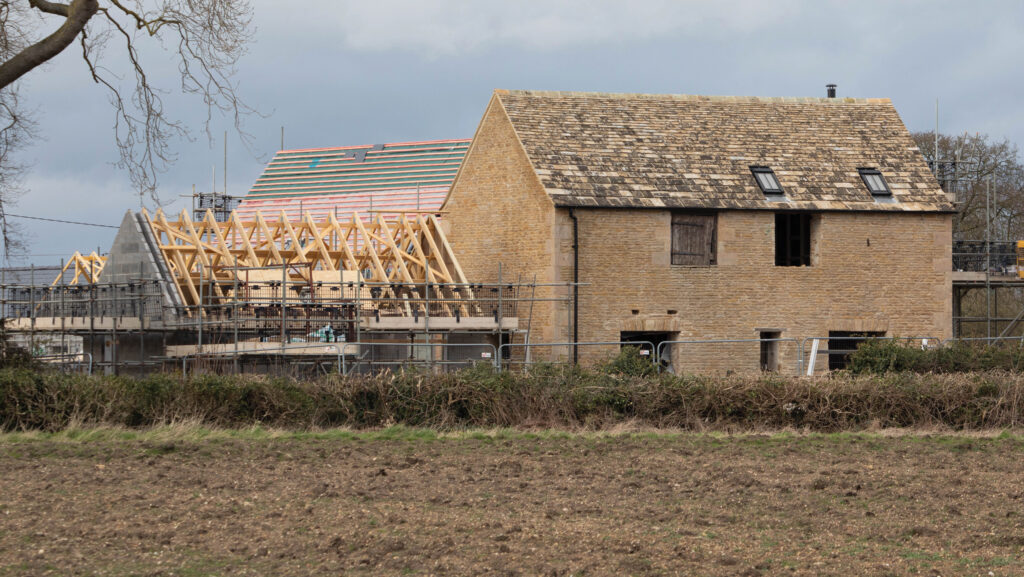9 action points to improve farm business resilience
 © iStock Photo/iStock
© iStock Photo/iStock Only one in five farm businesses in England has a formal business plan, according to the Farm Business Survey (FBS) for 2022-2023, which covers the 2022 harvest, calf and lamb crops.
The results also show that more than two thirds could benefit from producing financial information to help them improve decision making.
It is not uncommon for these to be outwardly successful businesses, says Karl McConville, deputy head of Strutt & Parker’s rural consultancy team.
He suggests key areas to address in order to achieve this.
See also: 15 fresh ideas for making money or cutting costs on farm
Make better use of your accounts
View the business accounts as a useful management tool, rather than a costly necessary evil which have to be produced for HMRC, says Karl.
They will highlight three key areas: profitability, cash generation, and capital growth (or the opposite).
“It is important to know the difference between these and to understand what they represent for your business,” he says.
For example, a business can make a strong profit but have a negative cash position or estates can have historic balance sheets that do not show the true level of capital growth.
“Many people could get better value from their accounts. If they are unsure about understanding them, then they can ask their accountant, agent or bank manager to explain them and show them what to look for.”
Short courses on how to interpret accounts can also be taken online or through local colleges.
Produce a budget and business plan
Once the accounts are understood, producing a budget for the next year or so becomes more straightforward, going through each number in the accounts and taking a view on whether it will be higher or lower than last year, by how much, and then recalculating to look at the outcome.
Better cash management can be achieved by breaking down the budget into a monthly projected cash flow, allowing decisions to be made about the timing of grain sales, for example.
A business plan describes in words how the projected numbers will be achieved, and can be used as a road map.
With a budget and business plan in place, “what if” questions can be asked, such as the impact of taking on extra land, changing the rotation, or the number of milkings.
“Even if the decision is to carry on as you are, then at least you have sense checked where you are heading with the business.
“Too many carry on or make changes without properly assessing the impact,” says Karl.
Ask for help
When someone is involved in the ‘weeds’ of a business, it can be difficult to spot glaringly obvious issues that an impartial outsider can see.
Ask someone to look at your business from the outside, suggests Karl. This may be a professional adviser, but it doesn’t have to be.
However, where someone is charging for this advice, they should be challenged to account for their value, both before they start and when the project is complete.”
Monitor the business plan and budget

© Tim Scrivener
The business plan and budget with monthly cash flow should be monitored regularly, so anything that strays from what’s expected can be examined.
For example, if more is spent on fertiliser than shown in budget, why was that – was more used, was the cost a tonne higher than budget, or was there an error in the numbers?
“This is particularly important with dairy, poultry, or pig enterprises,” says Karl.
“Where inputs are being bought and produce sold on an almost continuous basis, quick information allows for timely changes to accelerate positive outcomes or fix negative ones.”
It’s important for other enterprises too, to prevent recurring problems. Many farms have let property such as a cottage that is no longer required for farm staff.
Extended void periods on let properties should be avoided so that costs are controlled.
“We see that a lot, where a tenancy is coming to an end and it’s only when the property is empty that the owner starts to arrange for decorating, improvements or repairs to be done.
“In the meantime, the bills are still coming in and in winter, that is likely to include heating.”
Benchmark to identify strengths and weaknesses
Benchmarking identifies areas where action to improve can often be taken relatively quickly. However, many use this only at gross margin level, says Karl.
When done on a whole accounts basis, all income and costs can be examined – for example, comparing the average rural let property rent a month on similar farms.
How much does fuel or insurance cost for an acre compared with those of similar businesses, and if there is room for improvement, how should this be addressed?
Machinery operations and costs are key area for this type of focus – are the right tractors pulling the right implements, or have bad/costly habits been established?
Higher costs are fine in some cases, says Karl, but not checking how they compare with those of similar businesses (and if they are different, establishing why) can lead to flying blind.
“For example, pedigree herds often have higher vet and med costs a head because they aim to sell breeding progeny with a health status to achieve higher sale prices.
“The error is having high costs without knowing why.”
Group buying inputs
Group buying can provide the advantage of larger volumes, better buying power, and a lower admin burden.
The biggest saving is often in management time and hassle, says Karl, not only through time spent gathering prices but also in delivery and payment arrangements.
“Don’t get hung up on finding a cheaper spray price than the group offering.
“It is important to look at the aggregate basket of inputs purchased, and remember that there are likely to be end of season adjustments through the group.”
Renewal quotes and fees
Supplier notifications of general price rises should be challenged – often they can be justified, but a rise should prompt a check for whether you are getting good value, great service and paying only for what is wanted or needed.
Relationships should be considered, as well as offers from other suppliers.
It might be that the scope of a service or supply can be changed to reduce the cost, or that extras, such as legal cover, are duplicated when they are not needed.
“With professional fees, think about whether you are getting what you want from those services.”

© Gary Naylor Photography
Borrowing and debt
Some businesses will not borrow on principle and could miss out on opportunities through this approach.
Conversely, borrowing to cover for a lack of profit or cash generation is not sustainable and should be avoided if possible, advises Karl.
“However, borrowing for the right reasons allows businesses to quickly adapt and take advantage of new opportunities.
“For example, the planning process is currently more supportive than it has been in many years for converting farm buildings into residential property.
“Spending £300,000 on a conversion that may generate £30,000 a year, add value to the capital base and spread risk within the business seems like a good idea.
“Most people do not have that sort of cash readily available, but borrowing for this type of opportunity is often cost-effective and generates cash for the bottom line.”
Structuring debt correctly is vital to ensure the best value. Key areas to consider include:
- Reviewing the overdraft – is it at a sensible level to cover just the working capital requirements of the business? An overdraft account should come back into credit within each year and not sit at its limits, or it becomes very expensive.
- Repayment basis – is it being repaid in line with the income and lifespan of the financed project? If not, a review is necessary. Is the debt affordable? If not, the business will have to pay for more debt more often, which is expensive and time-consuming.
- Right lender – it is important to have a good relationship with the lender, who should act quickly to requests and understand the business well. “If they don’t, it is advisable to move lender. The price of debt is a key driver and structuring it properly is crucial,” says Karl.
“With the increase in interest rates, we are seeing significant cost differences between institutions and service levels have changed enormously.
“Consider using a finance broker for guidance and support in structuring deals, and finding the right fit.”
Diversification – don’t forget the core business
Advisers should challenge everyone who diversifies to ensure that the core farming enterprises remain profitable.
“Far too often, people take their eye off the farming and focus on a diversification, and the core business suffers,” says Karl McConville, deputy head of Strutt & Parker’s rural consultancy team.
“It may be necessary to introduce new people or new skills to the business to either backfill roles on the farm or to drive forward a diversification at pace.
“Alternative enterprises should have separate budgets and it’s important to truly understand what they are adding and, importantly, what they are taking away.”
